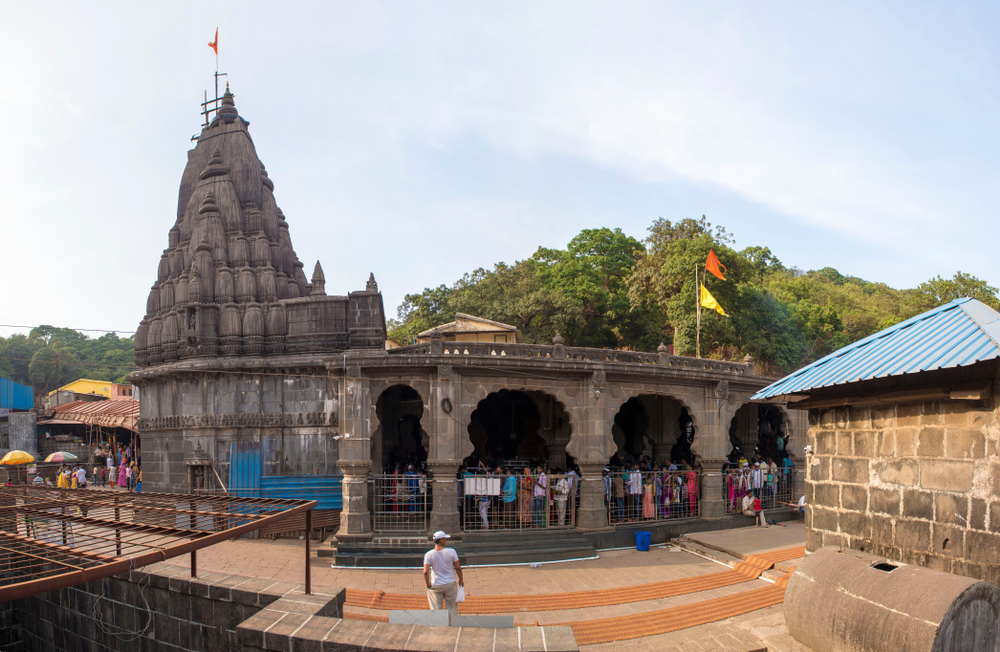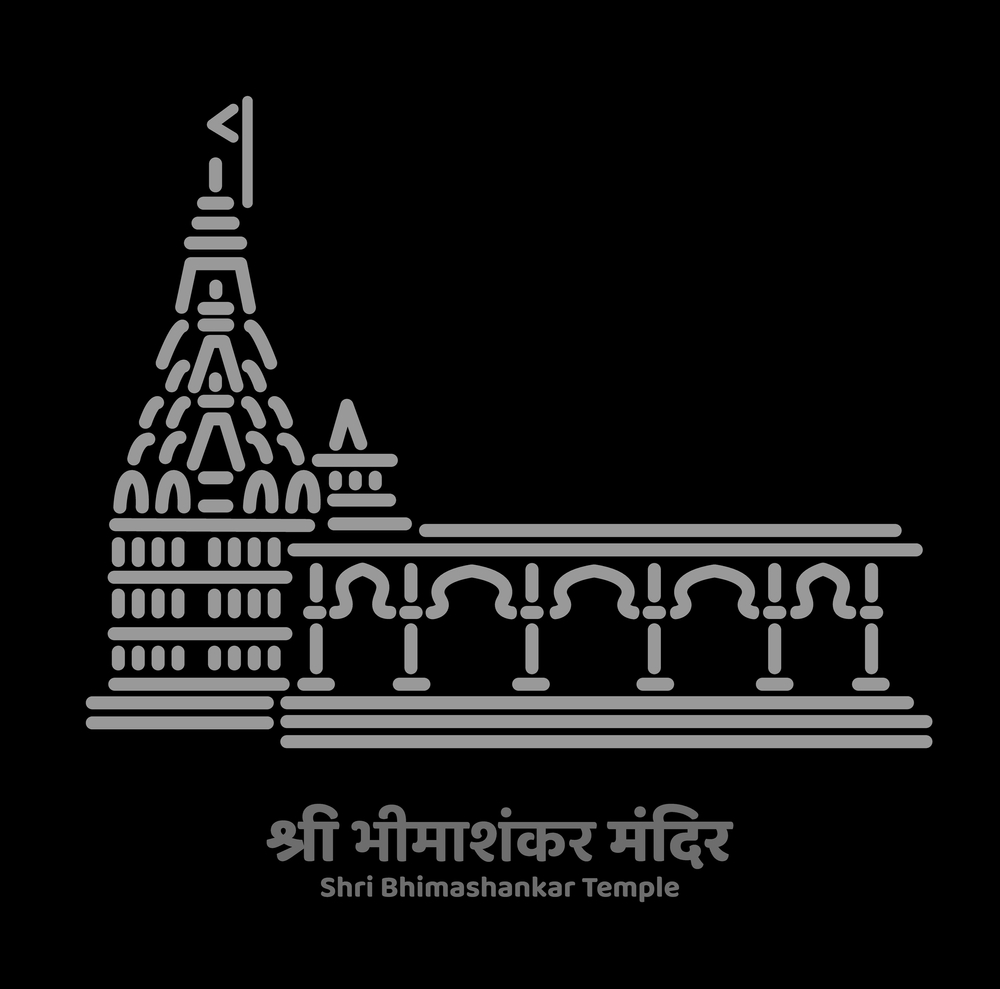Table of Contents
ToggleBhimashankar Temple: A Sacred Jewel in the Western Ghats.
The Bhimashankar Temple is an attraction of great spiritual significance and great architectural beauty, hidden away in the verdant hills of the Western Ghats. This ancient temple, dedicated to Lord Shiva, is one of India’s twelve Jyotirlingas, or most revered Shiva shrines. The peaceful surroundings and solemn atmosphere make Bhimashankar Temple a must-see for both pilgrims and tourists.
The Rich History of Bhimashankar Temple
The Bhimashankar Temple, nestled in the rich Western Ghats of Maharashtra, India, is a respected journey location with a history that intertwines mythology, spirituality, and ancient architecture. Being one of Lord Shiva’s twelve Jyotirlingas, this temple is extremely important to Hindus. Devotees and history buffs from all over the world are drawn to it by its rich historical story and spiritual legacy.
Origins in Mythology
The Bhimashankar Legend
The Hindu mythology is a major part of the history of the Bhimashankar Temple. Legend has it that a powerful creature by the name of Tripurasura menaced both the gods and humanity. Lord Shiva replied the gods’ prayers for help by taking on the powerful frame of Bhimashankar, which allowed him to defeat Tripurasura. This act of divine destruction and salvation blessed the area, making it a sacred location for worship. The name “Bhimashankar” is inferred from this legendary occasion, where “Bhima” refers to the powerful shape of Shiva and “Shankar” is another name for Lord Shiva.

Old Construction
Historical Chronology
The Bhimashankar Temple is believed to have been built in the 13th century. However, some reliable sources suggest that the temple’s origins are older, maybe going all the way back to the early Middle Ages. Although the exact era of its building is still a topic of thoughtful discussion, the engineering marvels and engravings on the temple provide valuable insights into its antiquity.
Architectural Influence
The construction styles of the sanctuary are a combination of Nagara and Hemadpanthi. Many sanctuaries in North India follow the Nagara style, which is distinguished by its curved towers and intricate carvings. The Hemadpanthi fashion, named after Hemadpant, a Yadava dynasty prime minister, is distinguished by its simplicity and use of locally accessible materials. The Bhimashankar Temple’s blend of different styles demonstrates the exchanges of culture and architectural ideas that took place when it was being built.
Medieval Importance
Yadava Line and Following Adherence
The Bhimashankar Temple developed due to the Yadava tradition (9th to 13th centuries), recognized for its devotion to Lord Shiva and attention to temple engineering. The Yadavas were important in the establishment of the temple’s devout centrality and in its development. Following the Yadava model, the temple went on to receive backing from several kings and local leaders, ensuring its preservation and distinguishing status as a travel destination.
Inscriptions and epigraphs.
A few carvings and epigraphs that provide insight into its actual trip are located within the religious complex. Written in ancient languages like Marathi and Devanagari, these engravings provide interesting details about the temple’s donors, renovations, and presents from lovers over the ages. They are essential records of the temple’s social and religious history.


The Cultural Renaissance
Time Contributions by Maratha
The temple had a cultural revival during the Maratha Empire’s reign in the 17th and 18th centuries. Renowned for endorsing the arts and religion, the Marathas contributed major contributions to the construction of the temple. Chhatrapati Shivaji Maharaj, the founder of the Maratha Empire, is said to have visited the shrine and offered prayers, so elevating its significance. The Maratha emperors made several remodeling attempts to preserve and improve the temple’s architectural design and spiritual ambiance.
During the British Colonial Period
The maintenance of many ancient temples, including the Bhimashankar temple, deteriorated during the British colonial era in India. However, the temple’s sanctity was maintained by local communities and dedicated worshipers of Lord Shiva. Efforts were undertaken to conserve the temple from neglect while also preserving the temple’s age-old traditions and celebrations.

Modern Period and Preservation Post-Independence Developments
Following India’s independence in 1947, the Bhimashankar Temple was given renewed attention by the government and social preservationists. Recognizing the temple’s significance in both history and society, efforts were taken to protect and preserve it. The Archaeological Survey of India (ASI) and other cultural institutions made an effort to preserve the temple complex’s fundamental integrity and aesthetic appeal.
Tourism and pilgrimage
The Bhimashankar Temple has increased in popularity as a travel and tourism destination in the past few years. Numerous historical and spiritual significance of the temple, along with its peaceful surroundings, attracts many tourists each year. Infrastructure development, such as improved roadway connectivity and accommodation facilities, has made it easier to reach to devotees and historical devotees.


Very nice temple: thanks for giving information